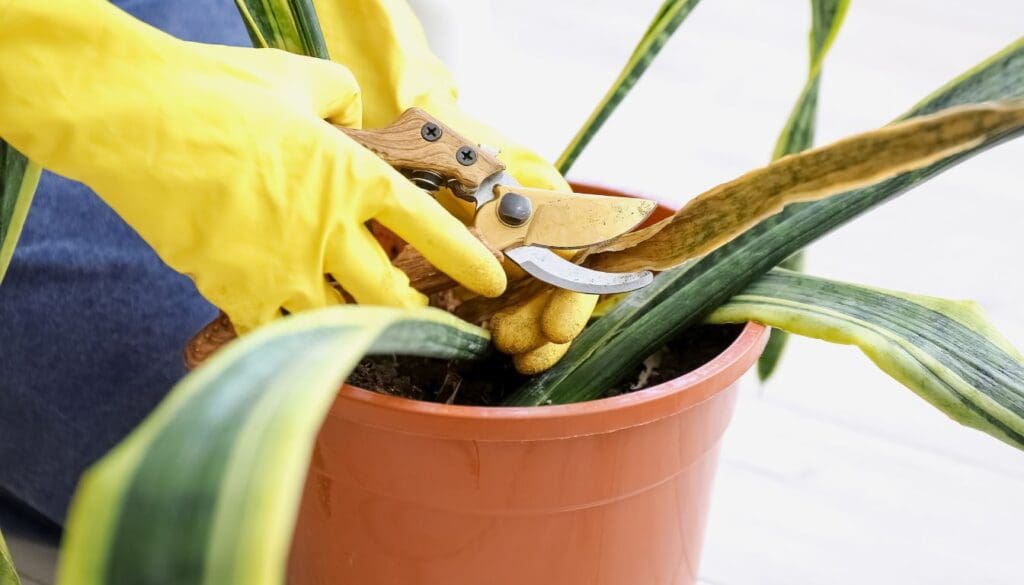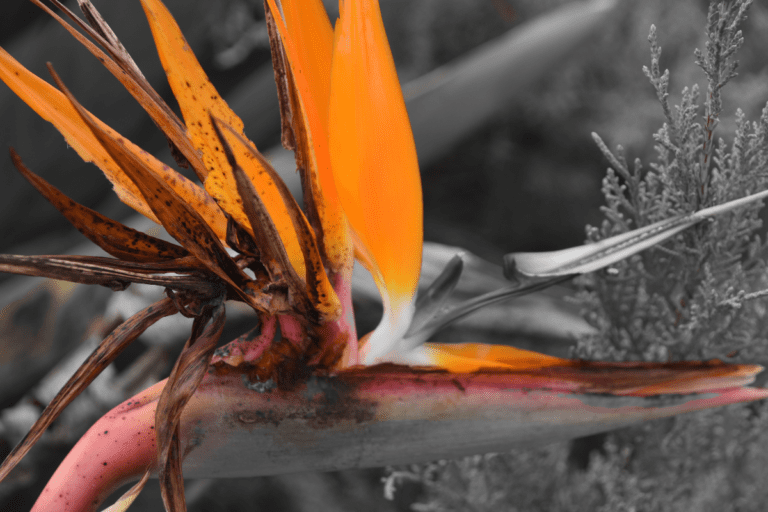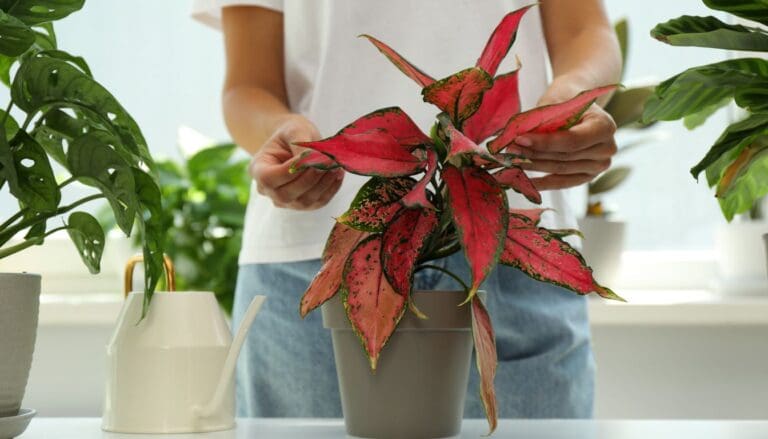How To Save A Dying Snake Plant? (7 Common Problems & Solution)
Snake plants are an excellent choice for beginners and will not create much mess for the new hobbyist. However, any plant can suffer due to unavoidable situations, and sometimes they may give up on you. It is crucial to understand why your snake plant is dying to take appropriate action so that you can revive your snake plant.
Inadequate watering, overfertilization, and stress is the root cause of a dying snake plant. Water your snake plant when the soil is dry and fertilize them during the growing season. Maintaining an ideal temperature and humidity and providing indirect light can revive your snake plant.
The problem is not the above-given reasons. It is pressurizing the plant with improper care or cultural conditions and not rectifying them on time. Your snake plant is likely to suffer due to stress leading to wilting of the plant.
In this article, we will learn all about some common problems that result in the wilting of your snake plant and how we can fix the same and revive your snake plant back to healthy conditions.
Also read: Why is my snake plant dying?

Please note: Simplify Plants is reader-supported. Some links in the post are affiliate links and I get a commission from purchases made through links in the post.
Signs of dying snake plant
A dying snake plant will give you many visual cues to identify the problem as soon as possible. It is crucial to understand these cues so that we can take necessary action to save your plant. These cues include:
- Brown leaves
- Stunted growth
- Yellowing leaves
- Leaves are falling off
- Droopy leaves
- Foul odor from soil
How do you revive a dying snake plant?
Saving the snake plant is essential and can be made easier by identifying the problem causing pain to the plant. By reading further, you will learn the reasons for the problem and the solution for curing the issue as well.
Overwatered snake plant

Snake plants cannot stand too much water, and if the plant remains in waterlogged soil, then the roots can stop functioning, resulting in the plant’s wilting.
Possible Problems:
- Root rot.
- Pest infestation.
- Brown leaves.
- Pale leaves.
- Leaves fall off.
- Brown edges
Solutions:
- Stop watering.
- Provide a full day in-direct sunlight.
- Provide proper air circulation.
- Water only when the soil is dry.
Prevention:
- The snake plant should be watered only when the soil needs it.
- The finger method helps to identify if the soil is dry or moist.
- Dig the finger/skewer in the soil up to a few inches for a minute.
- Pull out the finger/skewer. If there is any soil stick to the finger/skewer, that means the soil is still moist and doesn’t need water.
- If you are a beginner, use a moisture meter to tell you the soil’s moisture level.
- Soil and roots of the snake plant should not be kept in water.
- The excess water should drain out completely within 2 minutes of watering.
- Do not follow any routine blindly.
- Watering needs change with the season.
Underwatered snake plant

Underwatering can also impact the growth of the snake plant. Although underwatering your snake plant isn’t as bad of a deal as overwatering, but in the longterm, your plant is likely to stress out, resulting in poor growth.
Possible Problems:
- Soil pulling away
- Leaves turning brown
- Discoloration
- Slow growth
- Droopy leaves
- Stressed leaves
- Brown edges
Solutions:
- Remove damaged leaves, if any.
- Water your plant and let the excess water drain out of the drainage holes. Water it again.
- This will instantly help to increase the moisture level of the plant.
- You can also use a dish under the pot while watering.
- The excess water will drain into the dish.
- The soil and roots will uptake the water through capillary action.
- Remove the water from the dish after an hour.
Prevention:
- Water the snake plant when the soil is dry.
- You can keep the soil on the drier side, but dry soil for a prolonged period will harm the plant.
- Use the finger/skewer method to check the soil moisture.
- A moisture meter is also a great way to check soil moisture.
- Another way is by lifting the pot. If the pot seems than usual, then the soil is still moist.
- Check the potting mix; it should not be excessively draining.
Also read: Overwatering vs. Under watering
Lighting Issues

Snake plants usually get disturbed due to too much light or shady light for too long hours. That can affect their growth at the beginning and then lead to the wilting of the plant.
Possible Problems:
- Droopy leaves
- Brown leaves
- Sunburn
Solutions:
- Too much light for too many hours will stress the leaves and then soil of the snake plant.
- Direct sun will burn the leaves by reducing the moisture level from the leaves directly.
- Keep the plant in a somewhat shaded area but should get plenty of indirect light for at least 6-8 hours.
- If outdoors, install a shade over the plant to protect from direct sun.
- Use sheer curtains. If the plant is kept near a window, the light intensity will be filtered.
- If your snake plant is not getting enough light, move the plant to a brighter location.
- Use artificial light sources like grow lights, LED, etc. for homes where too much light is not available.
Prevention:
- Before keeping your snake plant, monitor the location.
- There should be enough light coming in, but no or very less direct light.
- The plant should get indirect light for at least 6 hours.
- East or west-facing windows work well for sufficient light availability for the plant.
Also read: How much light do snake plant need?
Root rot

Waterlogged soil and roots become weak, and the pathogens in the soil grow in moist conditions leading to root rot. That can lead be an end for your snake plant if not taken care of.
Possible Problems:
- Leaves are losing their shine
- Yellowish and pale leaves
- Wilting and shedding of leaves
- Leaves developing black spots
- Delicate and brown roots
- Pulpy and slimy roots
- Small leaves
- With severe damage to the roots, the plant may die within ten days.
- Stunted growth
Solutions:
- Prune the damaged leaves.
- Take the plant out of the pot and remove the soil from the roots.
- Wash the roots under running water and gently remove any damaged and weak roots.
- Next, use a sterilized pair of shears to trim off remaining dead roots.
- Cut the roots that are healthy just above the dead and damaged roots.
- Replant the plant in fresh, sterilized soil.
- The soil mix should be well aerated.
- Sterilize the scissors after using a solution of 1 part bleach to 3 parts water so that fungal spores don’t spread to soil or other plants.
Prevention:
- To prevent root rot, always water when required, and the drainage system should be proper.
- Treat any sign of root rot as soon as possible.
- Do not keep the soil soggy and keep a healthy environment in the soil.
- Repot in a larger pot than before.
Pest Infestation

Pests make the plant weak by keeping sucking the sap from the plant. They reduce the plant’s vigor and energy to keep the plant healthy.
Possible problems
- Slow maturity
- Leaves start collapsing
- Speckled leaves
- Leaf decay
- Distorted leaves
- White spots on the foliage
Solutions:
- Quarantine the infected snake plant and trim off the damaged leaves.
- Wash the plant with running water. Use any of the following organic ways to treat the plant.
Soapy Water
Dish soap and water will dehydrate the bugs. Combine 5 tbsp dish soap with 4 cups of water. Spray it on the plant.
Neem Oil Spray
Neem oil will help to get rid of the bugs as they are a natural fungicide and insecticide. Spray neem oil all over the plant at night once every week.
Alcohol Spray
Alcohol spray will repel insects without harming the plant. Mix 2 cups of 70% isopropyl alcohol with a liter of water and spray the plant.
- You can also use any chemical pest control to treat the infected plant.
Prevention:
- Keep checking on the plant every few days to find out any issue in the plant at an early stage.
- You can use neem oil or horticultural oil spray every month to prevent pest infestation.
- Do not overwater or over-fertilize.
- Keep the plant in good air circulation. Avoid a high humid environment.
- Do not propagate any contaminated cuttings.
Also Read: Root Rot In Snake Plant? (Signs, Causes & Fix)
Inappropriate temperature

Inappropriate temperature levels lead to the snake plant’s suffering and may even be the end for your plant. The cold damage in the winter months can stunt the plant’s growth.
Possible Problems:
- Discolored/Disfigured leaves
- Puckering of young leaves
- Brown blotches in mature leaves
- Wrinkled leaves
- Distressed plant
Solutions:
- Keep the temperature level between 65 degrees Fahrenheit to 80 degrees Fahrenheit during the daytime and 55 degrees Fahrenheit -70 degrees Fahrenheit at nighttime.
- Bring the plant indoors during cold weather to protect the plant from cold drafts.
- To maintain a high-temperature level during cold weather, keep the plant near the furnace but should not feel the heat.
Prevention:
- The ideal temperature for the snake plant is between 65 degrees Fahrenheit to 80 degrees Fahrenheit.
- Always avoid exposing the plant to cold drafts and temperature below 55 degrees Fahrenheit.
- Keep changing the position of the plant when the season changes to provide ideal temperature levels.
- Avoid keeping the snake plant near vents, radiators, or any other heating systems.
Humidity Issues

Snake plants don’t need high humidity levels, and low humidity can lead to loss of moisture from the leaves resulting in leaves related issues.
Possible problems:
- Dried Leaves
- Brown tips
- Brown spots
Solutions:
- Use a digital hygrometer or a humidifier to provide an ideal humid environment to the plant.
- Increase the humidity of the space. You will need a tray, pebbles, and purified water.
- Put the pebbles into the tray and fill it with water just enough to moisten the rocks.
- Put the plant on the tray. The water will slowly evaporate and improve the humidity around the plant.
- Alternatively, I would suggest investing in a good humidifier.
Prevention:
- The ideal humidity for the snake plant is about 40%.
- Do not overwater and never keep in a high humid environment for too long.
- Do not splash water on the leaves.
- Rub the leaves with a damp cloth.
- Use a humidifier to regulate the humidity in the room ideal for the plant.
Also read: Do snake plant need fertilization?(How much and how often)
Last Words

The problems of snake plants are usually related to cultural conditions and care routines. Too much of anything will harm the plant.
Snake plants are the easiest to care for. And in case your plant is suffering, it is really easy to revive back your plant by monitoring the plant’s needs and providing appropriate care.
Always take off the watering needs and feed with all-purpose houseplants fertilizer no more than once a month only during the growing season.
Do not mist nearby the snake plant and keep cleaning the leaves to remove any dust on them. This will facilitate photosynthesis too.
Source: The University of Arkansas Division of Agriculture, University of Minnesota, Snake plant profile, Lighting Indoor Houseplants
Recommended Garden Supplies
| Product Image | Our Recommended Gardening Supplies | Check Offers! |
|---|---|---|
Top Top
Top
Top
Top
Top
Top
Top
Top | rePotme Houseplant and Tropical Classic Potting Soil Mix | Check Offer On Amazon |
 Top
Top
Top
Top
Top
Top
Top
Top | Espoma Organic Indoor Plant Food | Check Offer On Amazon |
 Top
Top
Top
Top
Top
Top
Top
Top | GooingTop LED Grow Light 6000K Full Spectrum Clip Plant Growing Lamp | Check Offer On Amazon |
 Top
Top
Top
Top
Top
Top
Top
Top | Soil Moisture Meter | Check Offer On Amazon |
 Top
Top
Top
Top
Top
Top
Top
Top | Govee Hygrometer Thermometer, Bluetooth Enabled! | Check Offer On Amazon |
 Top
Top | LEVOIT Humidifiers for Large Room(Best For Plants) | Check Offer On Amazon |
 Top
Top
Top
Top
Top
Top
Top
Top | Upgraded DIY Automatic Drip Irrigation Kit, 15 Potted Houseplants Support | Check Offer On Amazon |
 Top
Top
Top
Top
Top
Top
Top
Top | Stainless Steel Heavy Duty Gardening Tool Set | Check Offer On Amazon |
 Top
Top
Top
Top
Top
Top
Top
Top | Bonide Insecticidal Soap | Check Offer On Amazon |
 Top
Top
Top
Top
Top
Top
Top
Top | Bonide 32 oz Spray Neem Oil for Organic Gardening | Check Offer On Amazon |
 Top
Top
Top
Top
Top
Top
Top
Top | Garden Safe Fungicide | Check Offer On Amazon |







My snake plant is very tall and was happy until I started watering during the spring. Should the dropped leaves be cut off and can they be used for starting a new plant?
Thank you for your great article.